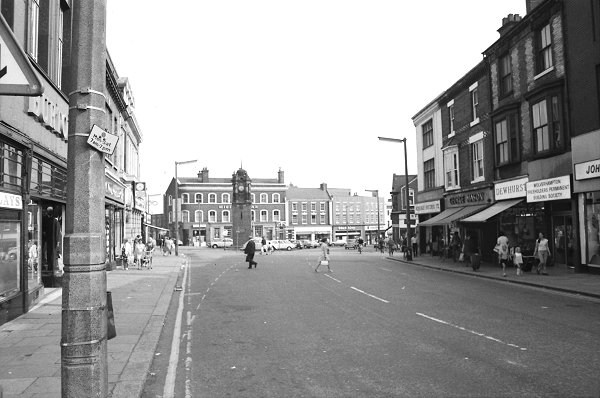 |
The Market Place, the heart of the town, as seen in the
early 1970s. Many well- known names can be seen above the
shops. On the left is Burton Tailoring, Woolworths, and the
West Bromwich Building Society. On the right is Dewhurst the
butchers, and George Mason the grocer. |
| Another view of the Market Place with the Midland Bank
and Sketchley dry cleaners behind the clock tower, and the
MEB shop on the far right. The town became well known for
its market, whose roots go back to the 18th century. |
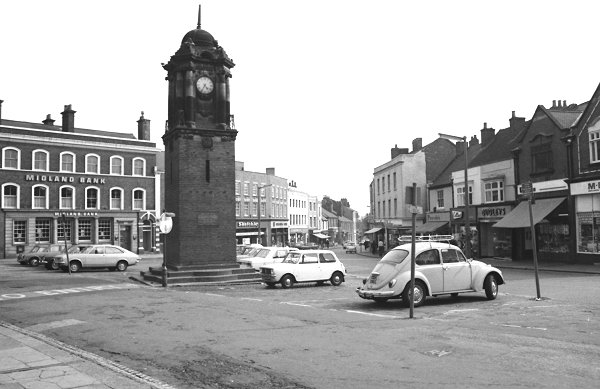 |
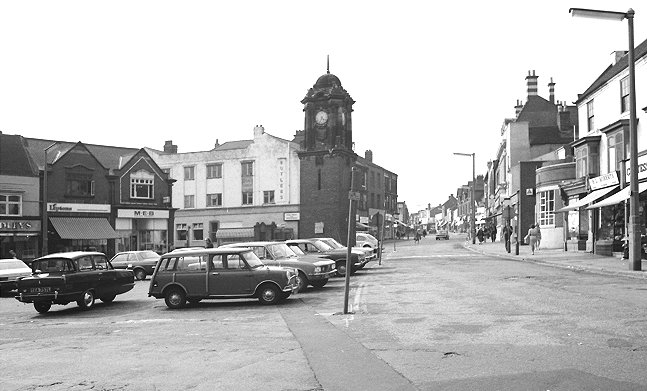
Wednesbury market began in 1709 when Queen Anne granted
a charter that gave John Hoo, Lord of the Manor, the
right to hold two annual fairs in the town, and a weekly
market on Fridays. Fairs were initially held on 25th
April and 23rd July until the calendar was altered in
1752, when the dates became 6th May and 3rd August. The
charter allowed the sale of cattle, beasts, and all
manner of goods, including the wares and merchandise
that were commonly bought in fairs and markets at the
time. |
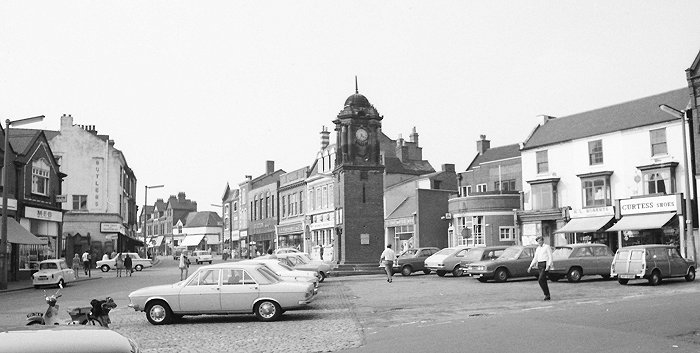
A final view of the Market Place looking towards Upper High
Street, and the old clock tower, which is
now Grade II listed. In 1970 the market moved to an
undercover market, and a traditional outside market, in Camp
Street. |
|
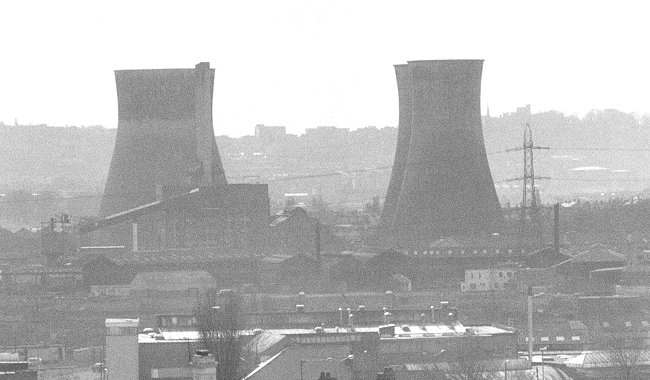
Ocker Hill Power Station viewed from Church Hill in the
early 1970s. |
|
Ocker Hill power station, a once familiar sight on the local
skyline. It was built by the Midland Electric Corporation,
soon after its formation in 1897.
The following year the M.E.C. became the first company to
get statuary powers to distribute electricity over a large
area. |
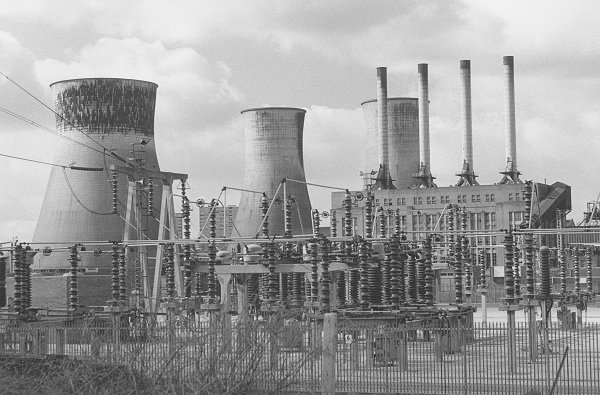 |
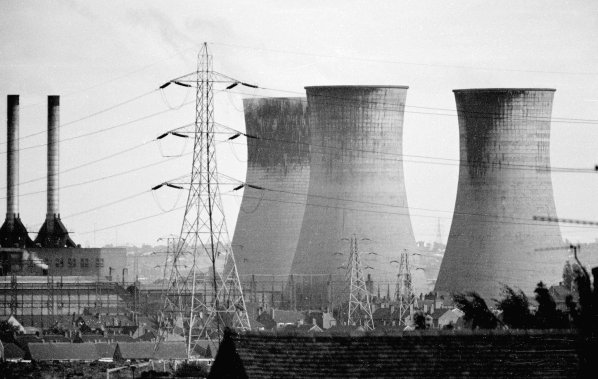 |
The Black Country towns that were supplied with electricity
by the MEC included: Bilston
Brierley Hill Cradley Heath Darlaston Kingswinford Old Hill
Tipton Wednesbury Willenhall |
| The power station with its generating hall, its four
tall chimneys, and the three cooling towers, was built on 14
acres of land. It became a well-known local landmark that
could be seen from miles around.
In 1977 the coal-fired power station was replaced by gas
turbine-driven generators.
The cooling towers survived until 1985. The gas turbine
driven power station
closed in 1996.
|
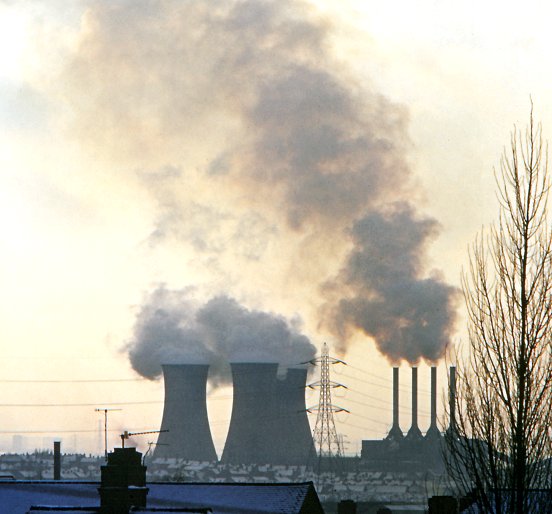 |
 |
A view of Wednesbury No. 1, the town's last signal box,
seen here in 1990.
The railway arrived here in 1863 when the the South
Staffordshire Railway was extended, with the building of the
Darlaston Branch, which ran from James Bridge, through
Darlaston and Wednesbury to Princess End. |
| The signal box is a standard London & North Western
Railway design. Most of the parts were made at Crewe. The
signal box stood next to Potter's Lane and controlled the
barrier at the level crossing.
On the other side of Potter's Lane was Wednesbury Town
station. |
 |
 |
An interior view of the signal box. I went there in
1990, knocked on the door, and asked the friendly signalman
if I could see inside. He allowed me to take several
photographs, and inspect the interlocking mechanism below. |
| The signalman assumed that the signal box was from the
Great Western Railway, which ran nearby, where the metro
runs today. He was surprised to discover that it was a
London and North Western Railway building, and interested to
be shown the L&NWR name on some of the fittings. |
| A view of the line near the Golds Hill crossing. The
line closed in 1993. The last scheduled train ran through
Wednesbury on 19th March, 1993.
The signalling equipment was soon removed, and sadly
Wednesbury No. 1 Signal box was destroyed by an arson
attack. |
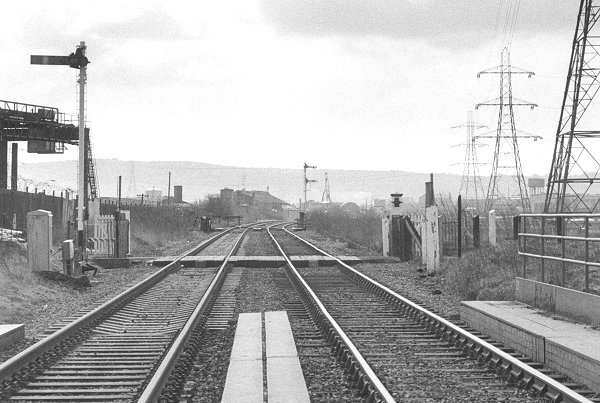 |
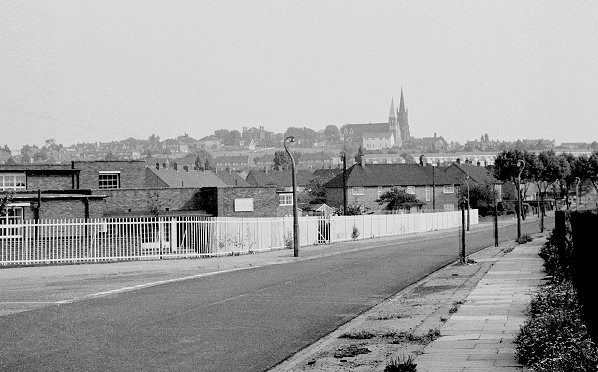 |
Looking towards Church Hill from Old Park Road in the
late 1970s. On the left is Old Park Primary School.
Church Hill is Wednesbury's main landmark.
It can be seen
from much of the surrounding area. |
There has been a church on the hill since the early 13th
century.
It is recorded in the Plea Rolls of King
John for the year 1210-1211.
The present church dates from the late 15th, or early 16th
century.It has a pulpit which carries the date 1611. |
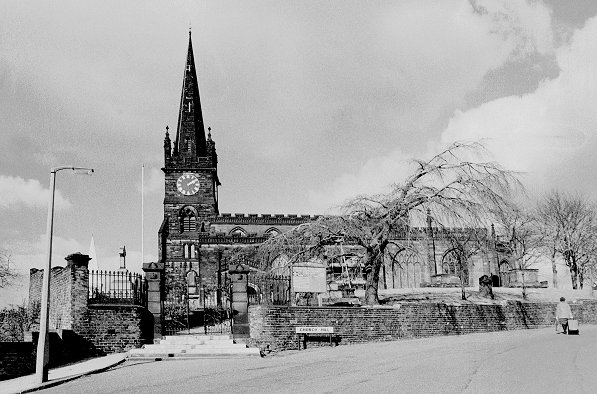
St. Bartholomew’s Church which overlooks the western end of
Church Hill. |
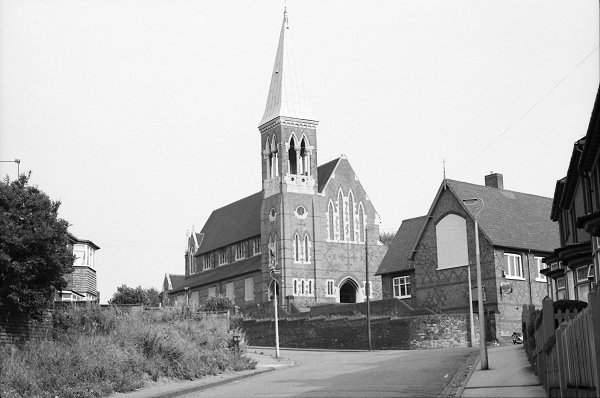 |
St. Mary's Church on Church Hill, as seen from Hall End.
The church was built in 1872 to the designs of Mr. Gilbert
S. Blount of London.It is in early English style and
consists of a nave, aisles, chancel, chapels, and a tower. |
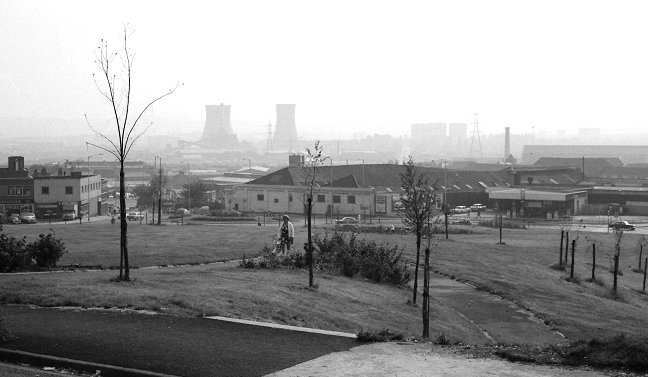
A view from Church Hill showing the Black Country
skyline. In the centre is Ocker Hill Power Station, and
to the right are the high rise flats at Ocker Hill. All
of which are now gone. |
|

An earlier view from Church Hill in the 1960s, looking
down Earps Lane. |
|
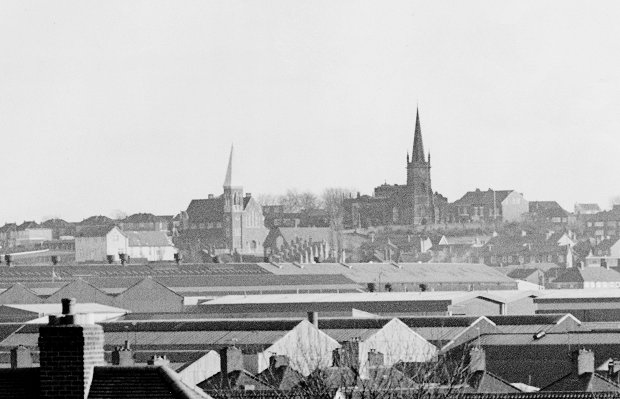
A final view of Church Hill and its two prominent
landmarks, St. Mary's and St. Barts. |
| Looking down Old Park Road from its junction with Manor
House Road. The view is dominated by Old Park Works which
at the time was owned by Metro-Cammell, part of the
Metropolitan Cammell Railway Carriage and Wagon Co. Ltd. |
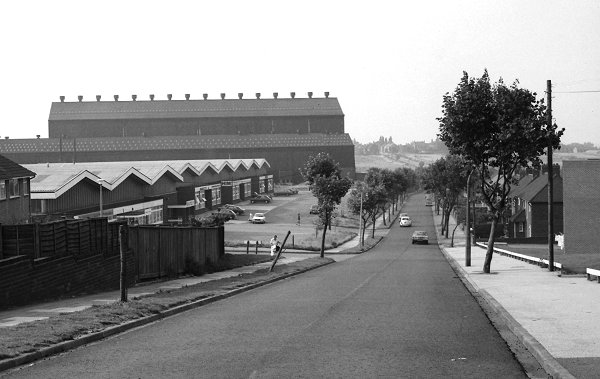 |
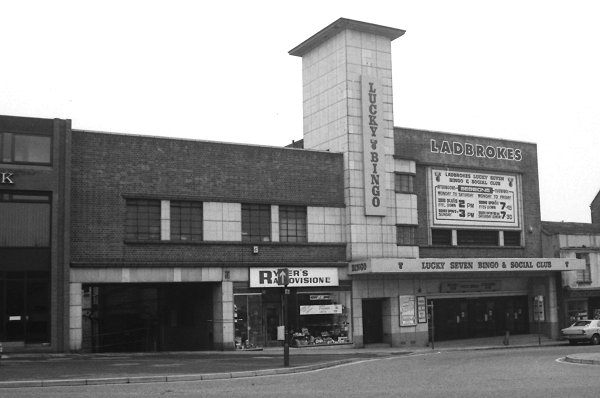 |
Ladbrokes Lucky Seven Bingo and Social Club in Walsall
Street which opened in 1974. It was later taken over by
Walkers to become Walkers Bingo & Social Club.
It became extremely successful with more than 1,500
members, and 4,000 visitors each week. |
| By the early years of this century it was finding it
difficult to compete with the larger bingo chains, and
visitor numbers plummeted to around 800 people per week.
It closed at the end of February 2010. The building
will be remembered by many as the Gaumont Cinema, which
opened in October 1938. On 9th March, 1964 it became the
Odeon, and in January 1972 it became 'The Silver'. |
|
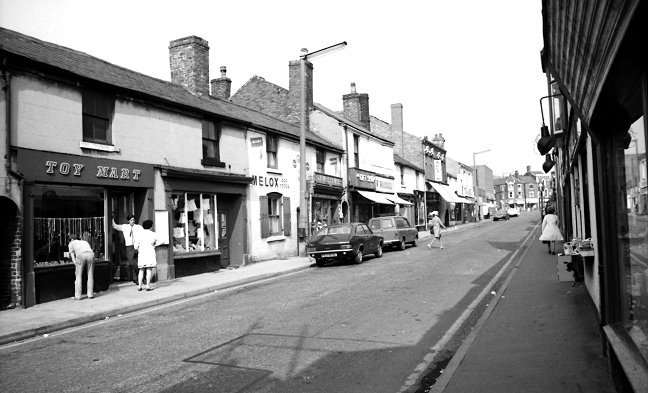
Union Street looking towards Market Place in the late
1970s, on a quiet summer's afternoon. |
|
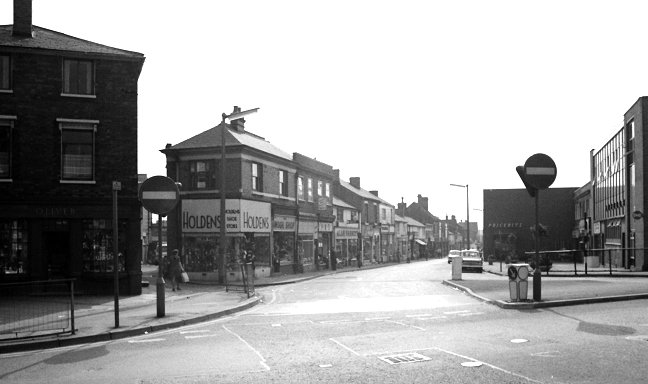
A view from the opposite direction, looking into Union
Street from Market Place, before pedestrianisation. |
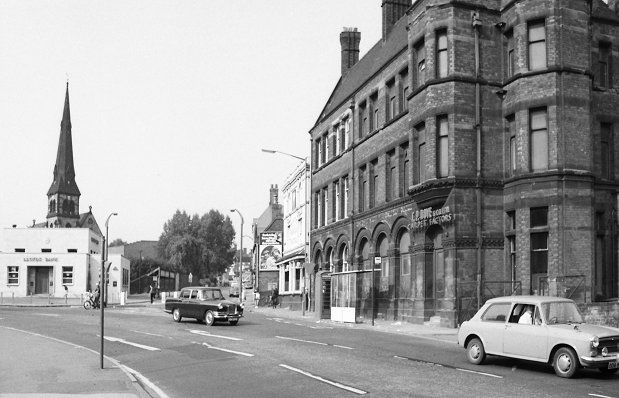
Looking up Lower High Street from Bridge Street. Behind
Lloyds Bank on the left is St. John's Church and on the
right is the White Horse pub, the bus stop for West
Bromwich and Birmingham, and C. P. Dove & Co. Ltd.
Carpet Factors. |
| A view of St. John’s Church, as seen from Lower High
Street in the mid 1970s. The church, which seated 1,000
people, was built in local sandstone, and consecrated on
13th May, 1846.
The building became derelict in 1980 and was demolished in July 1985. |
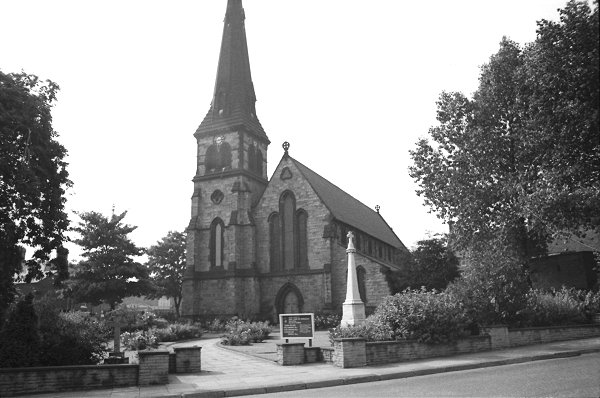 |
 |
|
 |
|
Return to
Wolverhampton |
|
Return to
the beginning |
|
|